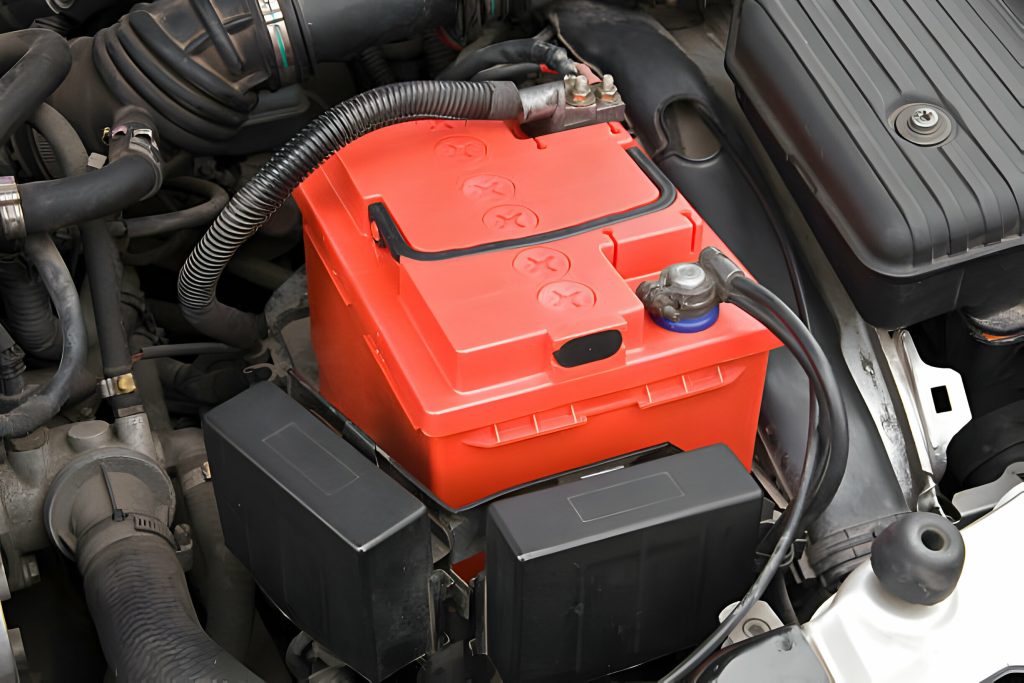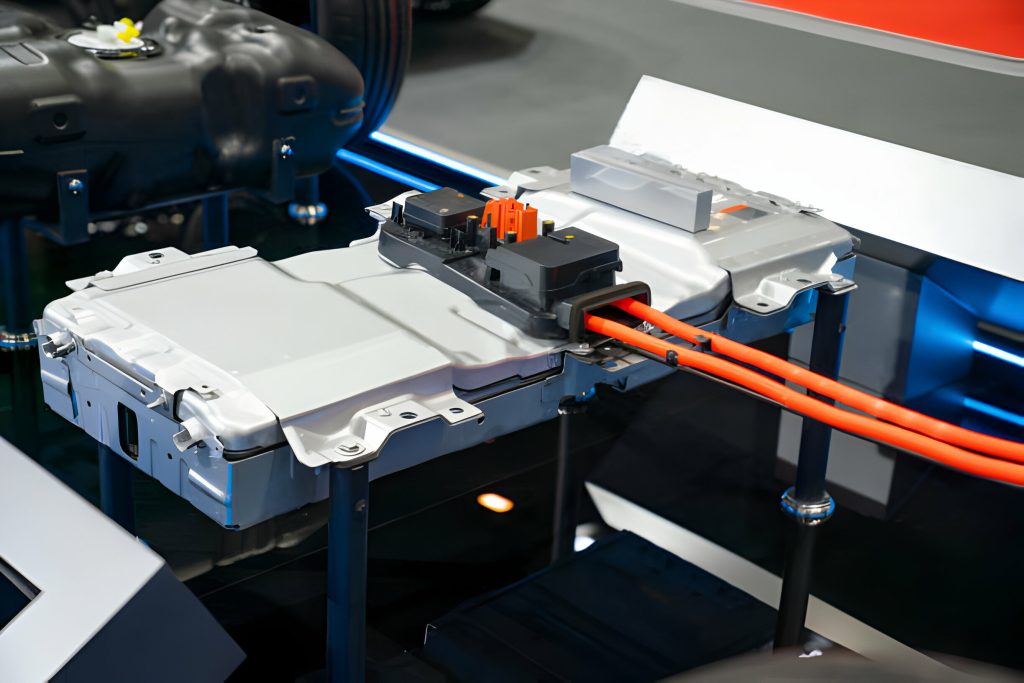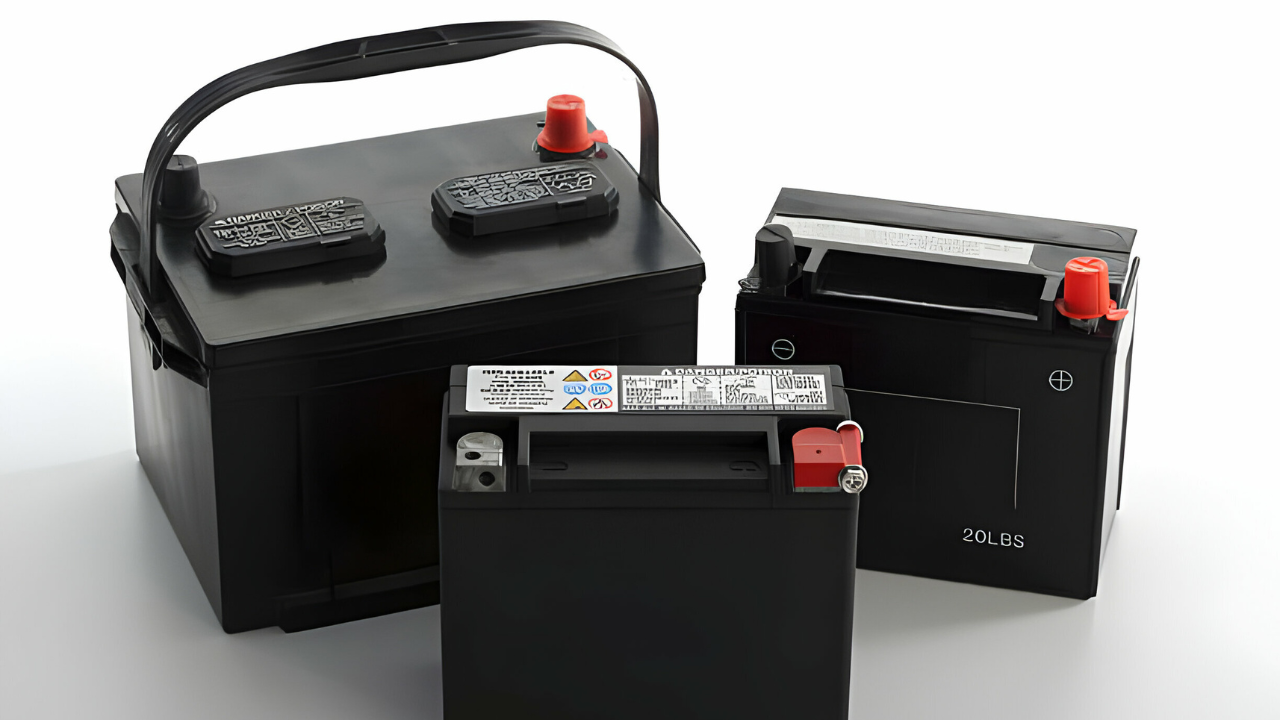Yes, you can use a deep cycle battery in a car, but it may not be the most efficient choice for starting the engine due to its design for long, slow discharges compared to the short, quick bursts needed for starting a car. Deep cycle batteries are better suited for powering accessories in a car, such as a stereo system or winch, rather than being the primary source for turning over the engine.
If you plan to use your vehicle for short trips and frequent starts primarily, it’s recommended to stick with a traditional car battery. However, a deep-cycle battery may be a suitable alternative for off-road vehicles or those with high electrical demands.
Deep Cycle Battery Vs. Car Battery
Deep cycle batteries and car batteries differ in their design and purpose. It’s essential to understand the differences between these two types of batteries to determine if a deep-cycle battery can be used in a car.
Key Differences
Both deep cycle and car batteries are designed for specific applications. Car batteries are primarily used to start the vehicle’s engine and power electrical accessories. In contrast, deep-cycle batteries provide a steady and prolonged power supply over an extended period.
Understanding The Chemistry
Car batteries, also known as starting or SLI (starting, lighting, and ignition), are constructed with thin lead plates to generate a high amount of current over a short period. On the other hand, deep-cycle batteries have thicker lead plates, allowing them to discharge power steadily over a longer duration.

Key Differences
Both deep cycle and car batteries are designed for specific applications. Car batteries are primarily used to start the vehicle’s engine and power electrical accessories. In contrast, deep-cycle batteries provide a steady and prolonged power supply over an extended period.Understanding The Chemistry
Car batteries, also known as starting or SLI (starting, lighting, and ignition), are constructed with thin lead plates to generate a high amount of current over a short period. On the other hand, deep-cycle batteries have thicker lead plates, allowing them to discharge power steadily over a longer duration.Advantages Of Using A Deep Cycle Battery In A Car
Deep cycle batteries offer several advantages when used in a car, making them a suitable alternative to traditional car batteries. Let’s look at some critical advantages of using a deep-cycle battery in a car.
Longer Lifespan
Deep cycle batteries typically have a longer lifespan compared to traditional car batteries. This is due to their design, which allows them to be discharged and recharged repeatedly without affecting their performance. The durable construction of deep-cycle batteries enables them to withstand the rigors of regular use, offering a reliable power source for an extended period.
Higher Capacity
Deep cycle batteries are known for their higher capacity, providing a consistent and reliable power supply for car electronics and accessories. Their ability to deliver sustained power over extended periods makes them well-suited for powering accessories such as refrigerators, winches, and lighting systems in off-road vehicles.
Additionally, the high capacity of deep-cycle batteries ensures they can meet the demands of modern cars with advanced electrical systems and technology.
Considerations Before Using A Deep Cycle Battery
Using a deep-cycle battery in a car can offer certain advantages, such as increased battery life and better performance for electrical accessories. However, before making the switch, there are a few essential considerations to consider to ensure compatibility and efficient operation. Here are two crucial factors to assess: battery size and fit and charging system compatibility:
Battery Size And Fit
When considering using a deep cycle battery in your car, it’s essential to determine whether the battery size and fit will be suitable for your vehicle. Due to their design and capacity, deep-cycle batteries are generally larger and heavier than standard car batteries.
Therefore, it’s crucial to check the dimensions of the battery and compare them to the available space in your car’s battery compartment. Additionally, you must consider the weight capacity of your vehicle’s battery tray or mounting system to ensure it can adequately support the deep cycle battery’s extra weight.
Charging System Compatibility
Another critical consideration is the compatibility of your car’s charging system with a deep-cycle battery. Car charging systems are typically designed for standard automotive batteries, which operate differently from deep-cycle batteries. Deep cycle batteries need a different charging profile to reach their full potential and maintain optimal performance.
Therefore, it’s crucial to assess the capabilities of your car’s charging system and determine whether it can provide the necessary voltage and current to charge a deep-cycle battery effectively. If the charging system is incompatible, modifications or additional equipment may be required to ensure proper charging and prevent damage to the battery.
Before transitioning to a deep cycle battery in your car, carefully evaluate battery size and fit and the compatibility of your car’s charging system. This assessment will help ensure that the deep cycle battery can be accommodated in your vehicle and that its charging needs will be met effectively.
By considering these factors upfront, you can make an informed decision and enjoy the benefits of a deep-cycle battery without any complications.

Credit: www.renogy.com
Installation Process
Replacing a car battery may seem daunting, but with the proper guidance, it can be a straightforward process. If you’re considering using a deep-cycle battery in your car, you must know how to install it to ensure optimal performance.
In this section, we will walk you through the step-by-step process of disconnecting the old battery and connecting the deep-cycle battery.
Disconnecting The Old Battery:
The first step is disconnecting the old battery to begin the installation process. Follow the steps below to disconnect your existing car battery safely:
- Start by ensuring the engine is off, and the keys are removed from the ignition.
- Locate the battery’s negative (-) terminal, usually marked with a black color or a (-) symbol.
- Loosen the nut connecting the negative terminal to the battery using a wrench or pliers.
- Once the nut is loosened, gently lift the negative cable away from the battery post.
- Repeat the same process for the positive (+) terminal, typically marked with red or a (+) symbol.
- Ensure the cables are kept away from metal surfaces to prevent accidental reconnection.
Connecting The Deep Cycle Battery:
Now that the old battery is disconnected, you can connect the deep-cycle battery to your car. Follow the steps below for a proper connection:
- Position the deep cycle battery close to its designated spot in the car, ensuring it is secure and won’t move during driving.
- Verify that the deep cycle battery’s voltage matches the requirements of your car.
- Connect the positive (+) cable of the deep cycle battery to the corresponding positive terminal of your car. Ensure a snug fit and secure the connection with a nut.
- Connect the negative (-) cable of the deep cycle battery to the corresponding negative terminal of your car. Again, ensure a tight connection and secure it with a nut.
- Double-check all connections to guarantee they are correctly tightened and secure.
- Finally, confirm that the deep cycle battery is securely mounted and won’t interfere with any car components.
With the deep cycle battery now connected, you can start your car and ensure everything functions correctly. Remember to safely dispose of the old battery and refer to the manufacturer’s instructions for specific guidelines for your deep-cycle battery type.
Can you jumpstart a car with a deep-cycle battery?
It is possible to jumpstart a car using a deep cycle battery, although it might not be as effective or reliable as a traditional automotive battery. Deep cycle batteries are designed to provide a steady amount of power over a long period, while automotive batteries are designed to deliver short bursts of high power to start an engine.
If you find yourself in a situation where you need to jumpstart a car with a deep-cycle battery, here are some steps you can follow:
-
Check Compatibility: Ensure the deep cycle battery has enough voltage and cold cranking amps to start the car effectively. It should ideally match or exceed the specifications of the car’s battery.
-
Position the Vehicles: Park the vehicle with the deep cycle battery close enough to the vehicle with the dead battery so that the jumper cables can reach both batteries comfortably.
-
Connect the Cables: Connect the deep cycle battery’s positive (+) terminal to the dead battery’s positive terminal. Then, connect the deep cycle battery’s negative (-) terminal to a clean, unpainted metal surface on the vehicle’s engine block with the dead battery. This is to ground the connection. Do not directly connect the deep cycle battery’s negative terminal to the dead battery’s negative terminal to avoid potential sparks.
-
Start the Working Vehicle: Start the vehicle with the deep cycle battery and let it run for a few minutes to allow the charge to transfer to the dead battery.
-
Attempt to Start the Dead Vehicle: Once you’ve let the working vehicle run for a few minutes, try to start the vehicle with the dead battery. If it starts successfully, let both vehicles run for a while to ensure the battery gets charged.
-
Disconnect the Cables: After the dead vehicle has started and is running smoothly, carefully disconnect the jumper cables in the reverse order you connected them.
-
Drive the Vehicle: It’s a good idea to drive the vehicle with the previously dead battery for a while to allow the alternator to recharge the battery fully.
Remember that using a deep cycle battery for jumpstarting is a temporary solution, and you should replace the vehicle’s battery as soon as possible for long-term reliability. Additionally, always exercise caution when working with batteries and electrical systems to avoid vehicle injury or damage.
Deep cycle vs regular battery charging
Charging deep cycle and regular automotive batteries differs mainly in the charging profile and purpose. Here’s a comparison:
-
Charging Profile:
- Deep Cycle Battery: Deep cycle batteries are designed to handle deeper discharges and are typically charged more slowly over an extended period. They can endure repeated charging and discharging cycles without significant degradation.
- Regular Automotive Battery: Automotive batteries, also known as starting batteries, are designed to provide high bursts of power to start an engine. They are usually charged more to replenish the charge used while starting quickly.
-
Charging Rate:
- Deep Cycle Battery: Deep cycle batteries are often charged at a lower current (C-rate), which means they are charged more slowly than automotive batteries. This slow charging helps prevent damage to the battery’s internal plates and prolongs its lifespan.
- Regular Automotive Battery: Automotive batteries can handle higher charging currents, allowing them to be charged more quickly.
-
Purpose:
- Deep Cycle Battery: Deep cycle batteries are commonly used in applications where a steady, sustained power output is required over an extended period, such as in RVs, boats, solar energy systems, and electric trolling motors.
- Regular Automotive Battery: Automotive batteries are primarily designed for starting vehicles, providing a high burst of power for a short duration to crank the engine. They are not intended for deep discharges and may be damaged if discharged deeply regularly.
-
Charging Method:
- Deep Cycle Battery: Deep cycle batteries can be charged using various methods, including constant voltage, smart chargers, and trickle charging. The charging method depends on the battery chemistry and the manufacturer’s recommendations.
- Regular Automotive Battery: Automotive batteries are often charged using the vehicle’s alternator while the engine is running or with a dedicated battery charger. The charging process is typically straightforward, aiming to restore the battery’s charge quickly.
In summary, while deep cycle and regular automotive batteries undergo charging processes to replenish their energy, the charging profiles and purposes differ based on their intended applications and design characteristics. It’s essential to follow the manufacturer’s recommendations for charging to ensure optimal performance and longevity of the battery.
Can you use a deep-cycle battery to start the boat?
Yes, you can use a deep cycle battery for starting a boat, especially if it’s a smaller vessel or if you have a dual-purpose deep cycle battery designed for both starting and deep cycling applications. However, there are some considerations to keep in mind:
-
Cold Cranking Amps (CCA): Deep cycle batteries generally have lower CCA ratings than dedicated starting batteries. Ensure the deep cycle battery you choose has sufficient CCA to reliably start your boat’s engine, especially in colder conditions.
-
Battery Capacity: Deep cycle batteries are designed to provide steady power over an extended period, while starting batteries are optimized for short bursts of high power. Ensure the deep cycle battery can crank the engine multiple times if necessary.
-
Dual-Purpose Batteries: Some deep cycle batteries are designed to handle both starting and deep cycling applications. These dual-purpose batteries compromise the characteristics of deep cycle and starting batteries and may be suitable for starting a boat.
-
Charging Requirements: Deep-cycle batteries may require a different charging profile than starting batteries. Ensure your boat’s charging system is compatible with deep-cycle batteries and can provide the appropriate charging voltage and current.
-
Longevity: While deep cycle batteries can be used for starting applications, frequent deep discharges may reduce their lifespan compared to using them primarily for deep cycling. Consider this factor when deciding whether to use a deep-cycle battery for starting your boat.
While it is possible to use a deep cycle battery for starting a boat, it’s essential to consider factors such as CCA rating, battery capacity, charging requirements, and battery longevity to ensure reliable performance and longevity. If in doubt, consult with a marine battery specialist or refer to the manufacturer’s recommendations for your boat and engine setup.

Frequently Asked Questions For Can You Use A Deep Cycle Battery In A Car
Can A Deep Cycle Battery Be Used In A Car?
No, a deep-cycle battery is not ideal for use in a car. While it can provide power for extended periods, it is not designed to handle the high current demands of a car’s starting system. Using a deep-cycle battery in a car may lead to premature failure and unreliable performance.
Will a car alternator charge a deep-cycle battery?
Yes, a car alternator can charge a deep-cycle battery, but it may not be the most efficient method. The alternator is designed primarily to maintain the charge of the car’s starting battery, which typically has different specifications than a deep cycle battery. However, with appropriate adjustments and possibly additional equipment like voltage regulators or charge controllers, it can be used to charge a deep cycle battery.
Why don t they use deep cycle batteries in cars?
Deep cycle batteries are not commonly used in cars because they are designed for a different purpose compared to the starting batteries typically used in cars. Deep cycle batteries are optimized to provide steady power over an extended period, suitable for applications like renewable energy systems, boats, or RVs. In contrast, starting batteries are designed to deliver a high burst of power to start the car’s engine quickly. Using a deep-cycle battery in a car may not provide the necessary starting power and could lead to performance issues.
Can you use a deep cycle battery as a start battery?
No, it is not recommended to use a deep cycle battery as a starting battery due to differences in design and performance characteristics.
Are deep cycle batteries for cars?
No, deep-cycle batteries are not typically used for cars.
Is it OK to use a marine battery in a car?
Using a marine battery in a car is generally OK, but it may not perform as efficiently as a car battery designed specifically for automotive use.
How do I know if my car battery is in a deep cycle?
Typically, car batteries are not deep-cycle batteries. Car batteries are designed for short bursts of high power to start the engine. In contrast, deep-cycle batteries are designed for sustained, low-power applications like powering electric trolling motors or RV appliances.
You can usually identify a deep cycle battery by its labeling, which may indicate “deep cycle” or have a higher reserve capacity rating. If unsure, consult the battery’s specifications or contact the manufacturer.
Conclusion
While a deep-cycle battery can technically be used in a car, it is not optimal. Car batteries are specifically designed to deliver quick bursts of power for starting the engine, while deep cycle batteries are better suited for prolonged, slow discharge.
Using a deep-cycle battery in a car may decrease performance and a shorter lifespan. It’s always best to use the type of battery the manufacturer recommends to ensure maximum efficiency and reliability.

I am a technology Specialized . I have experience in Technology, and all types of electronic devices like Battery . So I work on solving these issues and give various tips on these issues
